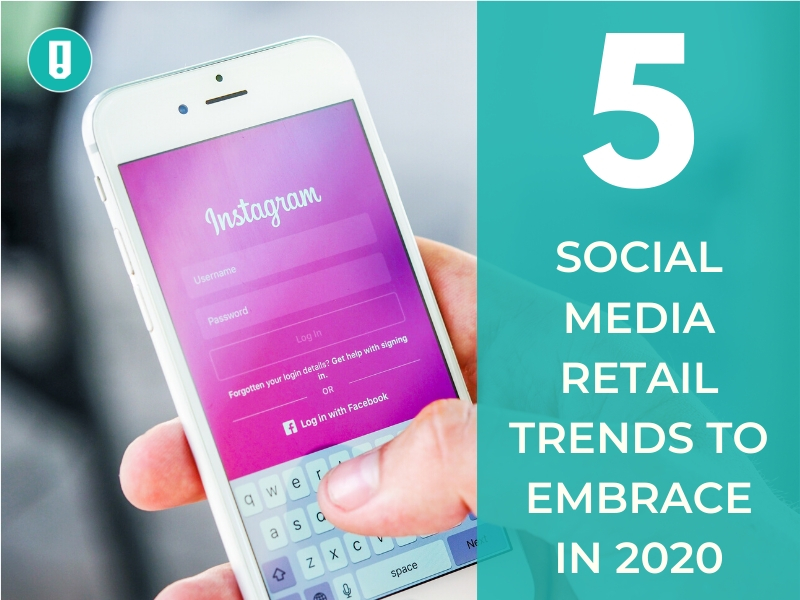It’s vital for retailers to focus on social media. Each platform holds significant influence to reach consumers, advertise and stay up-to-date on the latest trends and news. Social media trends drive engagement and success when retailers use them correctly and in a relevant manner. Here’s how you can bring about that success in 2020.
1. Refresh Your Brand
The first step you should take involves re-evaluating your engagement and building new goals. Social media changes frequently in terms of trends, news, focuses and interactions. Sometimes a platform alters the way you connect with customers. For instance, Instagram’s planned removal of likes will transform your engagement goals — should the company go through with it. This will require a new approach.
To refresh your goals, consider your analytics. If you use platforms like Google Analytics, take a look at where your traffic comes from. If most of it comes from one site, you’ll want to boost your other platforms to achieve the same level.
The way to start is by reconsidering your social media goals with the changing times. The trend itself is revitalizing your brand.
2. Dynamic Ads
The social media ad world is a groundbreaking place for retail trends. Advertisements are becoming more advanced, too — you may notice more engaging ads on social media platforms. Sometimes, you can buy products, like clothes, by clicking on them. Some retailers use videos and pictures — then provide the option to swipe through an assortment of products, click and buy.
Creating more dynamic ads means thinking outside the box. You want to grab customer’s attention instantly. What products can you place front and center in an advertisement? Can you use Facebook, Twitter or Instagram services?
Remember that mobile ads are everything. In a survey, 65% of respondents agreed that this technology increased sales. Having ads for these platforms is a must.
3. Audio and Visual Platforms
Facebook, Instagram and Twitter are the main three platforms that retailers turn to for business. However, you can also focus on audio and visual platforms to expand your reach. TikTok, for instance, has grown wildly popular and has a wide range that can boost your engagement.
YouTube has also shifted in the way retailers use it. This platform has been around for a while, and its popular content changes throughout the years. Short-form used to be most relevant, but now people tune into episode-length videos. The Bon Appetit channel is a powerful example. The brand has over 220 million views altogether with its different video series.
Additionally, keep voice search in mind. More people are using home assistants like Siri and Google Home. Optimize your titles, tags and content on social media so everything appears from keywords people use.
4. Unique Platforms
When it comes to using social media platforms for retail, the phrase “the more, the merrier” applies. More channels and profiles mean more ways to convert passive visitors into active customers. While Facebook, Instagram, Twitter and YouTube are leaders, you can look into smaller, growing platforms as well.
TikTok came about in 2017, has already surpassed 2 billion downloads and shows no signs of a downward trend. Pinterest, too, is on the rise. When you use apps like these, you open your business up to new clients and customers. You can stand out and create original content that engages people like never before.
5. Genuineness
Being genuine is a trend that’s becoming more important across platforms. People like to have transparency with who they shop from. They want to know about social and environmental commitments — and they value the honesty of brands.
For instance, be hesitant about influencer marketing. This kind of sponsorship appears to be on a decline due, in part, to insincerity and lack of trust. A more authentic approach would be to follow the social media trends and tie in your brand in an honest way.
Environmental commitments are a good example. People are becoming more eco-conscious — they want to see brands apply themselves helpfully. Though climate action is a movement and not a trend, the same concept applies.
The 2020 Influence
These social media trends influence how your business performs and shape how retailers use platforms in 2020. With the right integration, you can connect with consumers like never before.
Kayla Matthews is a business and technology blogger with bylines at Inman, DMNews, MakeUseOf, and more. To read more by Matthews, you can follow her on Twitter or subscribe to ProductivityBytes.com







Leave A Comment